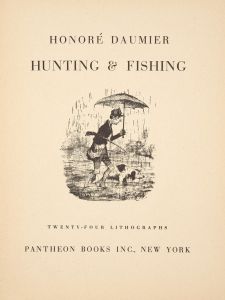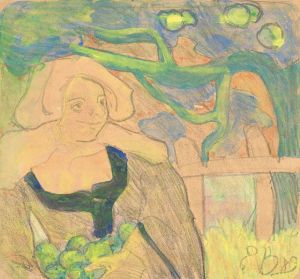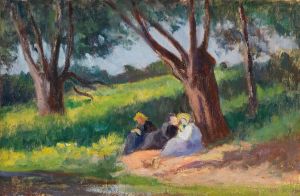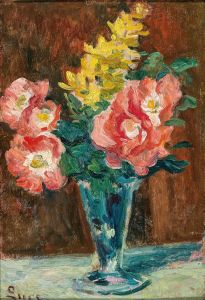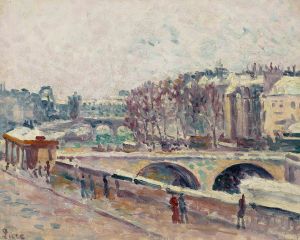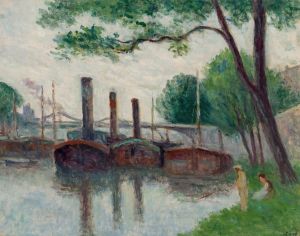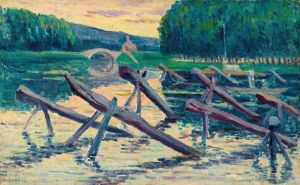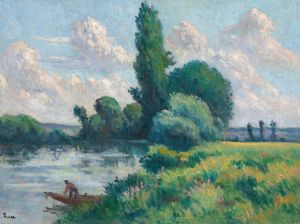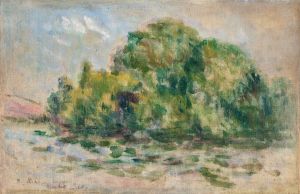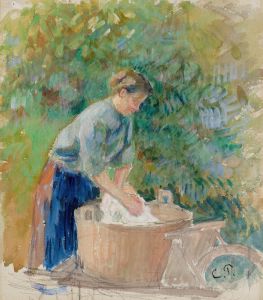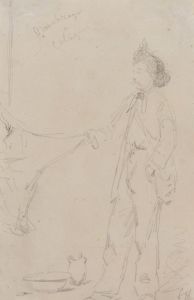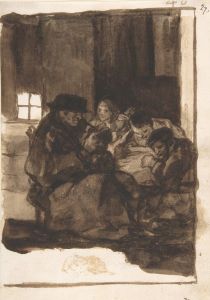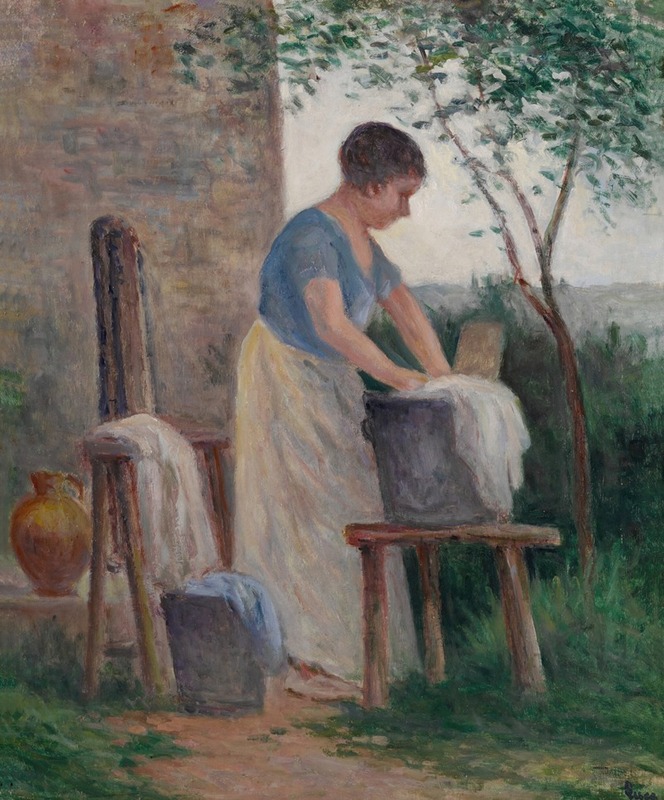
Rolleboise, la lessive dans le jardin
A hand-painted replica of Maximilien Luce’s masterpiece Rolleboise, la lessive dans le jardin, meticulously crafted by professional artists to capture the true essence of the original. Each piece is created with museum-quality canvas and rare mineral pigments, carefully painted by experienced artists with delicate brushstrokes and rich, layered colors to perfectly recreate the texture of the original artwork. Unlike machine-printed reproductions, this hand-painted version brings the painting to life, infused with the artist’s emotions and skill in every stroke. Whether for personal collection or home decoration, it instantly elevates the artistic atmosphere of any space.
Maximilien Luce was a prominent French Neo-Impressionist painter known for his pointillist technique and his focus on everyday life and landscapes. One of his notable works is "Rolleboise, la lessive dans le jardin," which translates to "Rolleboise, Laundry in the Garden." This painting exemplifies Luce's ability to capture the serene and intimate moments of rural life through his distinctive style.
Maximilien Luce was born on March 13, 1858, in Paris, France. He initially trained as an engraver before transitioning to painting, where he became associated with the Neo-Impressionist movement. This movement, which included artists like Georges Seurat and Paul Signac, was characterized by the use of small, distinct dots of color applied in patterns to form an image. This technique, known as pointillism, was intended to produce a greater vibrancy of color and luminosity than traditional methods.
"Rolleboise, la lessive dans le jardin" is a testament to Luce's mastery of this technique. The painting depicts a tranquil scene in the village of Rolleboise, located in the Île-de-France region. Rolleboise was a place that Luce visited frequently, and it provided him with ample inspiration for his landscapes and depictions of rural life. In this particular work, Luce captures the simple act of doing laundry in a garden, a common domestic chore that he elevates to a subject worthy of artistic exploration.
The composition of the painting is carefully structured, with the figures engaged in their task surrounded by the lush greenery of the garden. Luce's use of color is particularly noteworthy; he employs a palette of greens, blues, and earthy tones to convey the natural beauty of the setting. The pointillist technique allows for a play of light and shadow, giving the scene a sense of depth and movement. The dappled sunlight filtering through the trees adds a dynamic quality to the painting, enhancing the sense of a moment captured in time.
Luce's choice of subject matter reflects his interest in the lives of ordinary people and his commitment to portraying them with dignity and respect. By focusing on a mundane activity like laundry, Luce highlights the quiet beauty and rhythm of daily life. This approach is consistent with the broader aims of the Neo-Impressionist movement, which sought to depict modern life in all its facets, from the bustling city to the tranquil countryside.
Throughout his career, Luce remained dedicated to the principles of Neo-Impressionism, even as other artists moved away from the style. His works are celebrated for their technical precision, vibrant color, and ability to convey emotion and atmosphere. "Rolleboise, la lessive dans le jardin" is a fine example of Luce's artistic vision and his ability to find beauty in the everyday.
Maximilien Luce passed away on February 6, 1941, in Paris, leaving behind a rich legacy of paintings that continue to be appreciated for their artistic and historical significance. His works are held in numerous public and private collections, and they continue to be studied and admired by art enthusiasts and scholars alike. "Rolleboise, la lessive dans le jardin" remains a testament to Luce's skill and his enduring contribution to the world of art.





